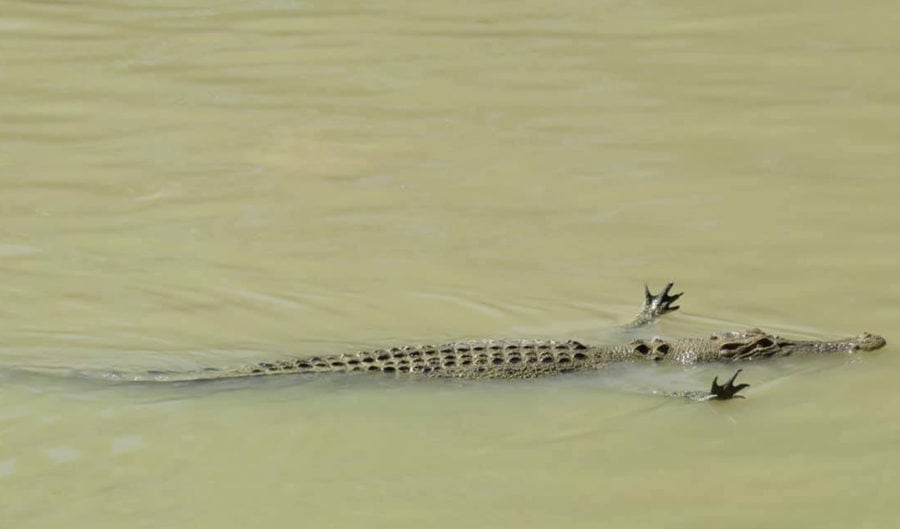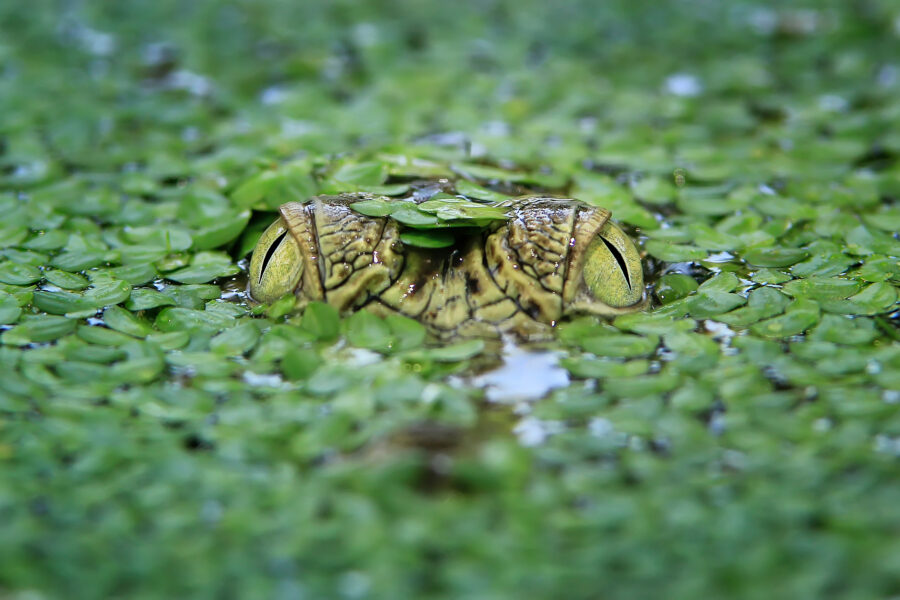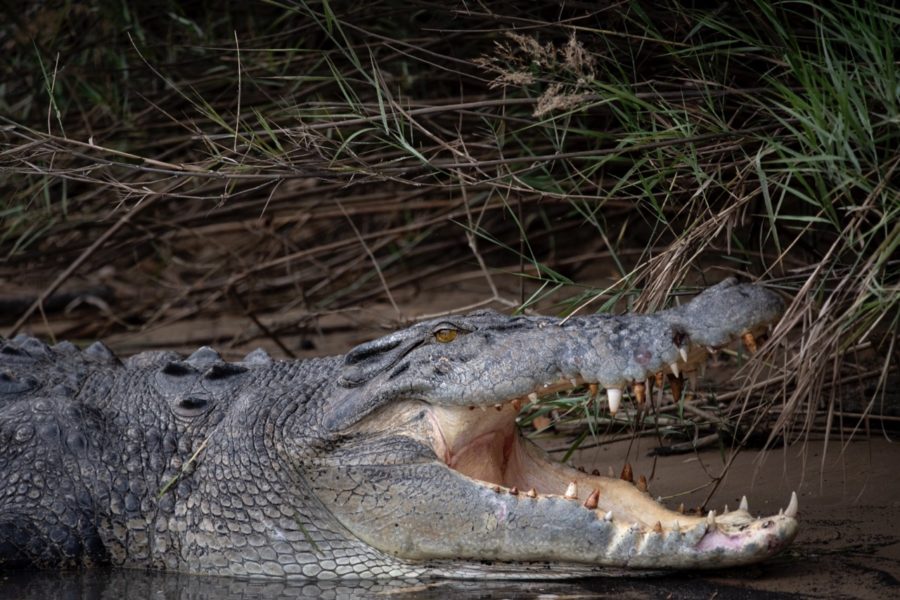What on Earth is this crocodile doing? A crocodile expert explains

It’s a weird sight to see, a crocodile with its forearms reaching out, as if to say “this is my space.” But this is what tourist Belinda Steindorf came across while visiting Cahill’s Crossing, located on the East Alligator River in Kakadu National Park.
While the behaviour may look bizarre, crocodile experts know it all too well.
Northern Territory-based expert Adam Britton first saw this behaviour in crocodiles 20 years ago. “I was pretty amazed when I first saw this at Cahill’s Crossing. I had to double take and rub my eyes not believing what I was seeing,” Adam recalls. “I could only guess at what they were doing but managed to get some photographs and it was clear the crocodiles were up to something.”
So, what exactly is going on in the photo? According to Adam, the croc is fishing.
“This is a type of fishing behaviour practiced by saltwater crocodiles, where they adopt a curious cross posture by stretching out their front and back legs, pointing their toes out of the water, and opening their mouth a little,” Adam explains.
“In this zen-like position they float around serenely, using their tail for movement and steering. Crocodile skin has thousands of pressure sensors scattered all over their body. These are called ‘integumentary sense organs’.
“If a fish near the surface swims close to the crocodile’s head, it fires off these pressure sensors along the jaws, neck and arms and the crocodile will – as quick as a flash – snap its head sideways to scoop up the fish in its jaws.” Most of the fish that the crocodile catches in this position are quite small, but they’re nonetheless a nutritional snack.
It’s an unusual behaviour to see and requires certain conditions.
“It can be reliably seen at Cahill’s Crossing in the mid-to-late dry season,” Adam says. “Crocodiles gather in large numbers for the chance to catch fish as river channels dry and concentrate more tasty food, and Cahill’s is special because there’s a road across the river – fish on the upstream side can only cross during high tide events, and while they’re waiting crocodiles will engage in fishing behaviour like this to grab as many as they can.”
This behaviour has been seen in many other species of crocodile. The behaviour was first described in the spectacled caimans of South America, and Adam has witnessed Indian mugger crocodiles in Sri Lanka doing something similar where he says they would sweep their hands through the water until they detect a fish, then snap their jaws sideways to grab it.
“While it’s not the most common way that crocodiles catch fish, it’s one of the many different ways they can be resourceful when opportunities arise.”



